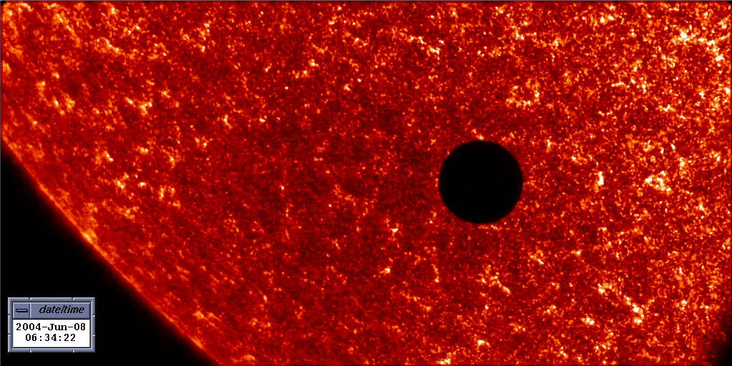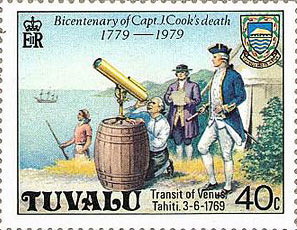Scientists to Watch Transit of Venus Around the Globe

When Venus passes between the Earth and the sun on June 5, one group of scientists will be kicking it old school. Very old school. They'll be watching the spectacle unfold using specialized telescopes from distant places around the world for a project that echoes the global reach of the 18th-century expeditions that sent scientists to far-flung spots to observe the celestial event.
Researchers with the Venus Twilight Experiment have set up coronagraphs — telescopes that block out direct sunlight, allowing an observer to pick out Venus from the sun's searing glare — in the Arctic, Arizona, Australia, California, Hawaii, India, Japan, Kazakhstan and the South Pacific.
In 1761 and 1769, European nations sent explorers sailing around the world to observe transits of Venus from a wide variety of spots in the hopes of figuring out some key information about the solar system.
Scientists of the day knew it was possible to use two points on the Earth and Venus itself like points on a giant, celestial protractor. Looking at the triangles formed by the three points would help reveal the distance between the Earth and the sun, and other large-scale distances.

James Cook observed the transit from Tahiti in 1769. Eight years earlier, for the 1761 transit, 176 scientists watched the event from 117 spots around the globe.
In 2012, the traveling scientists are seeking more subtle information. They're trying to flesh out some details about Venus's atmosphere. [Video: Last Venus Transit In Your Lifetime]
The data they gather will be studied together with observations made at Venus itself with the European Space Agency's Venus Express spacecraft.
Get the Space.com Newsletter
Breaking space news, the latest updates on rocket launches, skywatching events and more!
The last transit of Venus occurred in 2004. It was the first time the spectacle happened in the 20th century, and scientists were far better equipped to record and study the event than the previous transit, in 1882.
During that transit, some people had grown weary of the globe-trotting the event inspired among some scientists, as captured in a derisive story published in The New York Times on Dec. 6, 1882. The author suggested that researchers simply used the transit as an excuse for exotic — and expensive — travel.
"Hitherto the most remarkable feature of a transit of Venus has been the assumed impossibility of seeing it at home," the unnamed author wrote. "No matter where an astronomer might live, the transit was never visible within a thousand miles of his home.
"Why is it that the present transit can be seen here and seen by unlearned people through cheap smoked glass instead of costly telescopes?" the author inquired.
Yet today, more than 100 years later, scientists continue to see the value in using some very traditional observational methods to improve their understanding of the solar system.
In addition, ordinary, "unlearned" people can watch Venus's journey, either online or in person.
Follow OurAmazingPlanet for the latest in Earth science and exploration news on Twitter @OAPlanet and on Facebook.
Join our Space Forums to keep talking space on the latest missions, night sky and more! And if you have a news tip, correction or comment, let us know at: community@space.com.
OurAmazingPlanet was founded in 2010 by TechMediaNetwork, which owned Space.com at the time. OurAmazingPlanet was dedicated to celebrating Earth and the mysteries still to be answered in its ecosystems, from the top of the world to the bottom of the sea. The website published stories until 2017, and was incorporated into LiveScience's Earth section.











